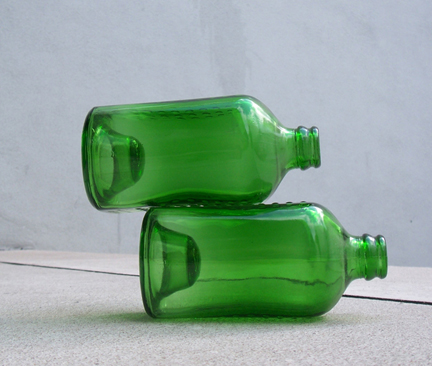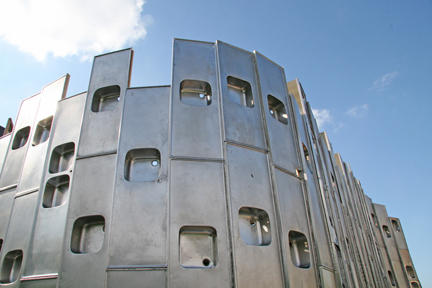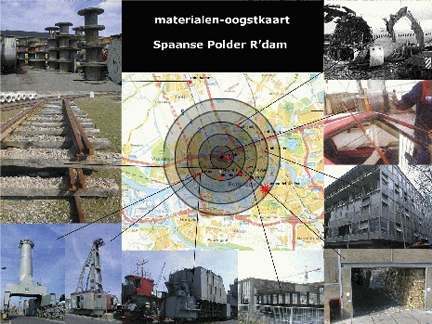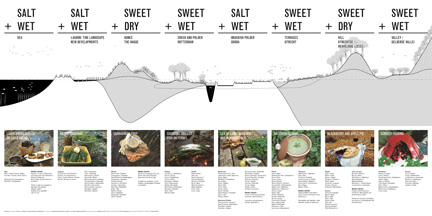Sunday Soup #6
Sunday Soup #6
Architecture, landscape and food
What effect do your eating habits have on your environment?
Jan Jongert of 2012architects lectured on a new type of architecture, which could develop when farming land and urban landscape become basic elements in every urban restructuring or new build project.
What effect do your eating habits have on your environment? Jago van Bergen of Van Bergen Kolpa Architecten presented the results of project Flow Food, in which visitors fulfilled the role of culinary planners.
Food chain city
How can we re-use waste and how do we use the least energy when recycling? Questions designers have asked themselves since the 60s of last century. We have seen different solutions since, amongst others the Heineken beer bottle, which functions as glass building block when empty and the PET bottle, a water bottle that can be filled with sand and piled up into emergency housing.
2012architecten does things more rigorously: when they start a new project, they start off with an extensive research into flows of waste in a certain area. The production of waste of a selection of surrounding companies is researched. This information is collected in ‘harvest maps’ and made public on recyclicity.net, a website connecting designer, demolisher, builder and waste scouts. In this way the recycle circle can be closed as much as possible and new building materials are used as little as possible. This is also how ‘Recycloop’ came into being, the 2012architecten’s pavilion for the Festival aan de Werf in Utrecht, build entirely from steel sinks.
This approach can also be used regarding food chains. “A basic food chain is a very inefficient open system,” Jan Jongert of 2012architecten says, “we try to optimize the food chain by connecting it to other chains and thus creating a bigger, but closed chain. African beer brewery ZERI is an example; they have integrated as many chains in order to minimize their waste production. They hardly produce any waste anymore and now also grow mushrooms, amongst other things.”
In this way different functions come together in a city or an industrial area. “We research how various functions can be combined: living, working, industry and agriculture. In the harbour area of Rotterdam a new function was found for the warmth produced during processing, which was lost as waste. That is when the Happy Shrimp Farm opened,” Jongert explains.
Integrating more green into a city has numerous advantages: it improves the quality of air, makes a city less noisy, takes up heat and absorbs water. Green cleanses industrial soil and it comes with an important social aspect: producing food locally can connect people. Jongert: “Though cultivation of food in cities is still quite rare. We do this in several projects, where roofs are used to grow vegetables and buildings also function as green houses. In this way buildings become self-sufficient and residents eat what is growing in and on their house. A funny detail: polymers from incontinency diapers form the perfect soil for these roofs.”
Culinairy planning
The Dutch landscape: a landscape of butter, cheese and bread - our farming land is taken up by cultivation of grain and breeding cows. According to the labels on our food, through which we approach it, what we produce in the Netherlands mainly are carbohydrates and protein.
This will remarkably change, according to Jago van Bergen of Van Bergen Kolpa Architecten. A few years ago he started his research into the Dutch landscape of the future and quickly found out that the changing balance between salt and fresh water will play a big role.
Jago van Bergen: “If you compare all the salt water in the world to a bath tub, then the amount of fresh water in the world is comparable to one teaspoon. Because the west of the Netherlands lays under sea level and it will get harder and harder to keep the water out, salt water will start playing an important role, also in the composition of our menu.”
In various schemes and illustrations Van Bergen shows how the Netherlands will slowly flip (the west going downwards and the east up). This creates different soil and groundwater combinations, which vary across the Netherlands and enable different opportunities for cultivating food.
Leading us through a crosscut of the Netherlands, Van Bergen starts with the North Sea, good for different sorts of algae like nori and aramé. Next to the sea, a whole new lagoon area will develop, salt and wet, where life is good for marsh samphire, crustacean and shellfish. The dunes in The Hague are dry and its groundwater fresh; perfect surroundings for sand leek, carrageen, sand potatoes, rocket and rabbit.
In the polders and creeks of Rotterdam fungi, hop and cranberries grow and deer and moose live in wet, freshwater surroundings. A remarkable fact is that brackish polders will have salt groundwater: because of the flipped land this is where the salt seepage water rises. Therefore naturally salted lambs meat is an option, as well as sea purslane and snails.
Van Bergen predicts rice fields around Utrecht and wild strawberries, berries, grapes and oats on the dry and fresh watered Utrechte Heuvelrug (hillside). The wet and fresh watered valleys of Gelderland are home to cows, sheep, fresh water fish and fungi.
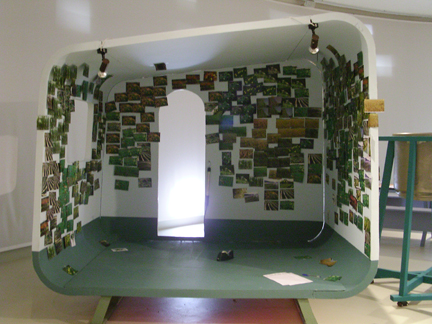 Culinairy planning in Platform21
Culinairy planning in Platform21
Altogether, an appealing amount of opportunities to extend our current repertoire of cheese, butter and bread. But what do the Dutch actually want to eat? We asked that question to visitors of Platform21. They could pick their three favourite ingredients from an assortment of the vegetables, fruit and meat the Dutch landscape of 2070 has to offer. After picking the ingredients, they could stick photos of the accompanying farming sites in a caravan. In this way we gained a glance of what our country will look like in the future. With our choice of what to eat, we determine how and where food will be cultivated in the Netherlands and how the landscape will look.
After seven weeks the wild strawberry proofs most popular, closely followed by green asparagus and marsh samphire. At the end of the presentation there was the opportunity to have your picture taken in this new landscape and give the taste buds an impression of what the Netherlands agri-culinairy will have to offer.
More information:
Jan Jongert - 2012Architecten:
www.2012architecten.nl
www.superuse.org
Jago van Bergen - Van Bergen Kolpa Architecten:
www.vanbergenkolpa.nl www.vanbergenkolpa.nl
